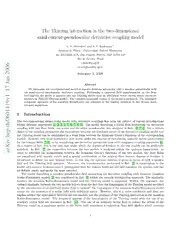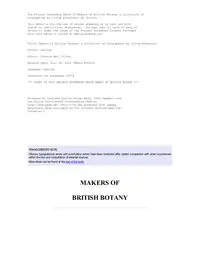
Makers of British Botany edited by F W Oliver PDF
Preview Makers of British Botany edited by F W Oliver
The Project Gutenberg EBook of Makers of British Botany; a collection of biographies by living botanists, by Various This eBook is for the use of anyone anywhere at no cost and with almost no restrictions whatsoever. You may copy it, give it away or re-use it under the terms of the Project Gutenberg License included with this eBook or online at www.gutenberg.org Title: Makers of British Botany; a collection of biographies by living botanists Author: Various Editor: Francis Wall Oliver Release Date: July 26, 2014 [EBook #46415] Language: English Character set encoding: UTF-8 *** START OF THIS PROJECT GUTENBERG EBOOK MAKES OF BRITISH BOTANY *** Produced by Charlene Taylor, Bryan Ness, John Campbell and the Online Distributed Proofreading Team at http://www.pgdp.net (This file was produced from images generously made available by The Internet Archive/American Libraries.) TRANSCRIBER'S NOTE Obvious typographical errors and punctuation errors have been corrected after careful comparison with other occurrences within the text and consultation of external sources. More detail can be found at the end of the book. MAKERS OF BRITISH BOTANY CAMBRIDGE UNIVERSITY PRESS London: FETTER LANE, E.C. C. F. CLAY, MANAGER Edinburgh: 100, PRINCES STREET London: WILLIAM WESLEY & SON, 28, ESSEX STREET, STRAND Berlin: A. ASHER AND CO. Leipzig: F. A. BROCKHAUS New York: G. P. PUTNAM'S SONS Bombay and Calcutta: MACMILLAN AND CO., LTD. All rights reserved John Hutton Balfour (1878) MAKERS OF BRITISH BOTANY A COLLECTION OF BIOGRAPHIES BY LIVING BOTANISTS Edited by F. W. OLIVER Cambridge: at the University Press 1913 Cambridge: PRINTED BY JOHN CLAY, M.A. AT THE UNIVERSITY PRESS PREFACE The origin and scope of the present book will be found fully indicated in the Introduction, so that it is not needful to refer to them here. One change in the original scheme of the work has been made during its passage through the press, viz. the inclusion of an additional chapter from the pen of Prof. F. O. Bower dealing with the life of the late Sir Joseph Hooker. Our veteran botanist passed away on Dec. 10, 1911, in his 95th year, and in him botany loses its outstanding personality as well as its principal link with the past. The history of botany in this country during the Victorian period, when it comes to be written, must of necessity be woven around the life of this great man. For the excellent index to the book the reader is indebted to Dr E. de Fraine, whose care and good judgment in this matter will be fully appreciated. F. W. O. October, 1912 CONTENTS PAGE Introduction 1 Robert Morison 1620-1683 and John Ray 1627-1705. By Sydney Howard Vines 8 Nehemiah Grew 1641-1712. By Agnes Arber 44 Stephen Hales 1677-1761. By Francis Darwin 65 John Hill 1716-1775. By T. G. Hill 84 Robert Brown 1773-1858. By J. B. Farmer 108 Sir William Hooker 1785-1865. By F. O. Bower 126 John Stevens Henslow 1796-1861. By George Henslow 151 John Lindley 1799-1865. By Frederick Keeble 164 William Griffith 1810-1845. By W. H. Lang 178 Arthur Henfrey 1819-1859. By F. W. Oliver 192 William Henry Harvey 1811-1866. By R. Lloyd Praeger 204 Miles Joseph Berkeley 1803-1889. By George Massee 225 Sir Joseph Henry Gilbert 1817-1901. By W. B. Bottomley 233 William Crawford Williamson 1816-1895. By Dukinfield H. Scott 243 Harry Marshall Ward 1854-1906. By Sir William Thiselton-Dyer 261 A sketch of the Professors of Botany in Edinburgh from 1670 until 1887. By Isaac Bayley Balfour 280 Sir Joseph Dalton Hooker 1817-1911. By F. O. Bower 302 Index 324 LIST OF ILLUSTRATIONS PLATE To face p. Frontispiece. John Hutton Balfour (1878). I. Robert Morison 8 II. Great Gate of the Physic Garden, Oxford 18 III. John Ray 28 IV. Nehemiah Grew (1701) 44 V. Plate from Anatomy of Vegetables Begun, 1672 48 VI. Facsimile of a page from The Comparative Anatomy of Trunks, Nehemiah Grew, 1675 52 VII. From Grew's Anatomy. Sheweth the Parts of a Goosberry. Part of a Vine Branch cut transversly, and splitt half way downe ye midle 56 VIII. Stephen Hales (1759) 65 IX. Plate 18 from Hales's Vegetable Staticks 82 X. John Hill 84 XI. Robert Brown (circa 1856) 108 XII. Sir William Jackson Hooker (1834) 126 XIII. John Stevens Henslow (1851) 151 XIV. John Lindley (1848) 164 XV. William Griffith (1843) 178 XVI. From Griffith's Notulae. Median section of the ovule of Cycas. Nucellar apex of Cycas with pollen chamber and pollen grains 188 XVII. William Henry Harvey 204 XVIII. Miles Joseph Berkeley 225 XIX. Joseph Henry Gilbert 233 XX. Henry Witham of Lartington. 243 XXI. William Crawford Williamson (1876) 246 XXII. Vascular system of stem of Lepidodendron selaginoides in transverse section 250 XXIII. Root of Calamites (Astromyelon Williamsonis) in transverse section 254 XXIV. Cone of Calamostachys Binneyana; sporangia and sporangiophores 256 XXV. Harry Marshall Ward (1895) 261 XXVI. Sir Joseph Dalton Hooker (1868) 302 Text-fig. p. 77. Figure from Vegetable Staticks showing a vine with mercury gauges in place to demonstrate root pressure. INTRODUCTION The present volume represents in somewhat expanded form a course of lectures arranged by the Board of Studies in Botany of the University of London and delivered during the early part of 1911 in the Botanical Department of University College, London. These lectures, which were ten in number, were widely attended by advanced and post-graduate students of the University and others interested in the subject. The ten lectures comprised in the course were delivered by various botanists, the lecturer in each case being either a worker in the same field as, or in some other way having a special qualification to deal with, his allotted subject. In view of the interest aroused by their delivery the hope found wide expression that the lectures might be issued in book form. At the time when the arrangements were being made for publication the University of London Press had not yet reached the publishing stage, so hospitality had to be sought elsewhere. That the book is issued from the Cambridge University Press is largely due to the good offices of Prof. A. C. Seward. In consenting to publish The Makers of British Botany the Cambridge University Press suggested that some additional chapters should be prepared so that the work might be more fully representative. This has been done so far as was possible in the time available. The sixteen chapters forming the book include (1) the ten lectures, which are printed essentially as they were delivered, (2) six additional chapters specially written under the circumstances just mentioned. As a rule each chapter will be found to deal with a single Botanist; with the exception of the first and last chapters. In the former Prof. Vines has linked together Morison and Ray, the founders of Systematic Botany in this country, whilst in the last Prof. Bayley Balfour has expanded what was originally intended as a sketch of his father, the late Prof. J. Hutton Balfour, into a very interesting account of his predecessors in the Edinburgh chair from the year 1670 almost down to the present time. The subjects treated, the authors and the order of arrangement are as follows:— [Pg 1] [2] Subject Born Died Author *Robert Morison 1620 1683 } Prof. S. H. Vines, F.R.S. *John Ray 1627 1705 } *Nehemiah Grew 1641 1712 Mrs Arber *Stephen Hales 1677 1761 Francis Darwin, F.R.S. John Hill 1716 1775 T. G. Hill *Robert Brown 1773 1858 Prof. J. B. Farmer, F.R.S. *Sir William Hooker 1785 1865 Prof. F. O. Bower, F.R.S. *The Rev. J. S. Henslow 1796 1861 The Rev. Prof. Geo. Henslow John Lindley 1799 1865 Prof. Frederick Keeble *William Griffith 1810 1845 Prof. W. H. Lang, F.R.S. *Arthur Henfrey 1819 1859 Prof. F. W. Oliver, F.R.S. *William Henry Harvey 1811 1866 W. Lloyd Praeger The Rev. Miles Berkeley 1803 1889 George Massee Sir Joseph Gilbert 1817 1901 Prof. W. B. Bottomley *William Crawford Williamson 1816 1895 Dr D. H. Scott, F.R.S. Harry Marshall Ward 1854 1905 Sir William Thiselton-Dyer, K.C.M.G., F.R.S. The Edinburgh Professors 1670 1887 Prof. I. Bayley Balfour, F.R.S. * Was the subject of a lecture in the University Course. The first three chapters deal with the founders of British Botany, Morison and Ray in the systematic field, Grew, the plant anatomist, and Hales the physiologist. These are pioneers and the names of Ray, Grew, and Hales must always remain illustrious in the annals of Botanical Science. John Hill, with all his versatility, belongs to another plane, but his inclusion here is justified on historical grounds, by the prominent part he played in making known the method of the great Swedish systematist Linnaeus, a method which took deep root and gave an immense stimulus to systematic studies in this country. In Robert Brown we have the greatest botanist of his day, for thirty years keeper of the Botanical Department of the British Museum. It is doubtful if any greater intellect than Brown's has ever been devoted to the service of Botanical Science. Sir William Hooker was the first Director of Kew, and under his genial administration the foundations of that great institution were most truly laid. Born under the star of Linnaeus, his own researches lay in the systematic field—more especially among the Ferns and Bryophytes. J. S. Henslow was for many years Professor of Botany at Cambridge, but it is his life as Rector of Hitcham in Suffolk that finds special prominence in the interesting Memoir which formed the subject-matter of his son's lecture. The account given of his educational methods will be read with interest in these days when "Nature Study" has been sprung on the world as a new thing. John Lindley was a man of the most amazing energy and his scientific output was prodigious. Though he attained high distinction in many fields of Botany, being an accomplished Systematist and Palaeobotanist, probably his greatest service was on the scientific side of Horticulture. Considering the scale of production, the work of Lindley maintains a remarkably high level. It is recorded of him that he never took a holiday till he reached the age of 52. His was the dominant personality in Botany of the early and mid-Victorian era. William Griffith had the energy and power of endurance of Lindley, under whose influence he came. Trained to the practice of medicine he took service under the East India Company where he was able to devote the priceless intervals between his official duties to botanical travel, collecting, and the morphological investigation of Indian plants. The results of his brief but remarkable career are embodied mainly in his voluminous illustrated notes which were published posthumously in 1852. The name of Griffith has been happily linked with that of Treub, his brilliant successor in our own times. Arthur Henfrey belonged to a very different type. Compelled by ill-health to the life of a recluse, his short life was mainly devoted to making known in England the great discoveries of the Hofmeisterian epoch. To Henfrey belongs the credit of being the first of our countrymen to recognise the full significance of the new morphology, the general recognition of which, however, he did not live to see. Henfrey was an extremely competent all-round Botanist whose single-minded devotion to his subject should not be allowed to fall into oblivion. William Henry Harvey is a representative of a numerous class among the followers of Botany in this country. A man of great personal charm and high culture, he was attracted into the subject from the love of collecting. His special field was that of the Marine Algae, in which he stood unrivalled. Harvey was an exquisite delineator of the seaweeds of which he was so enthusiastic a student. The memoir, based on his journals and letters, which was published shortly after his death, is a book well worth reading for its intimate sketches of the naturalists of his day and the vivid notes on his extended travels in the colonies and elsewhere. Miles Joseph Berkeley, like his contemporary Harvey, was a cryptogamic botanist. He was a voluminous contributor to the systematic literature of the Fungi over a period of fifty years, as well as being a pioneer in the field of plant pathology. The systematic collections accumulated during his long life form one of the glories of the Kew Herbarium. [3] [4] Sir Joseph Henry Gilbert's outlook on plants was entirely different from that of any of the foregoing. He regarded the plant essentially as the chemical offspring of the environment to which it was exposed. His life was devoted to the study of soils and crops in conjunction with Sir John Lawes. To these classic investigations carried out at Rothamsted, Gilbert brought the trained skill of the chemist. William Crawford Williamson was a great all-round naturalist of the Victorian period whose work as a Zoologist gained him high distinction long before his attention became seriously concentrated upon his famous studies into the structure of the fossil plants of the Coal Measures. Though these researches were pursued without any marked contemporary encouragement, at any rate until the closing years of his life, the field in which Williamson was so enthusiastic a pioneer has since his time been generally recognised as of the first importance—more especially in its bearing upon the pedigree of the vegetable kingdom. To-day, no branch of Botany has more recruits or is more vigorously pursued in this country than that of Palaeobotany, and so long as the science remains will the memory of Williamson be green. Harry Marshall Ward belongs to a generation younger than any of the foregoing. His student days coincided with the renaissance of Botany in England in the seventies of the last century, and coming under the influence of Huxley, Thiselton-Dyer, Vines and others, Ward early revealed himself as an ardent investigator. For twenty-five years he devoted his remarkable energies to a series of connected researches bearing broadly on the nutrition of the Fungi and allied organisms with especial reference to the relationships between host and parasite. The notice of his career which appears in this volume is from the pen of Sir William Thiselton-Dyer. Recently printed in the Obituary Notices of Fellows of the Royal Society, we are indebted to the courtesy of the author and of the Council of the Royal Society for permission to include it here. In a book like the present, the work of a large number of distinct contributors, it is evident that no continuous or homogeneous treatment of the history and progress of Botany in this country is possible. Judged even as a series of essays or studies of representative men, The Makers of British Botany will not escape criticism, so long as special reference to the work of Priestley, Cavendish and Sénébier finds no place in its pages, not to mention such obvious omissions as Knight, Daubeny and Bentham. These omissions have not been deliberate and it will no doubt be possible to repair them should a second edition of the work be called for. The case of Charles Darwin is different. Apart from the work for which he is most famous, Darwin was a great investigator of the movements of plants and of the biology of flowers. As this aspect of Darwin's work has received adequate treatment in the recent centenary volume published by the Cambridge University Press[1], it has not seemed necessary on the present occasion to traverse the ground again. The reader of The Makers of British Botany will judge, and we think rightly, that Botany has had its ups and downs in this country. At the end of the seventeenth century England was contributing her full share to the foundation and advancement of the subject. In the field of Systematic Botany Ray, at any rate, left his permanent influence as a taxonomist, whilst in Plant Anatomy, the offspring of the newly invented microscope, Grew divided the honours with his brilliant contemporary Malpighi. A few years later Stephen Hales was carrying out the famous experiments which are embodied in his Vegetable Staticks, entitling him to be justly regarded as the Father of plant physiology. Notwithstanding so admirable a beginning, the next century was almost a blank. The essay on John Hill serves to illustrate the sterility of this period. The dominant influence in Botany in the eighteenth century was that of Linnaeus, whose genius as a taxonomist gave the most wonderful impulse to the study of Botany that it has ever received. Shorn of its accumulated dead-weight of nomenclature, the simplified Botany of Linnaeus took deep root in this country and here for a century it reigned supreme as a source of inspiration. Fed on unlimited collections of plants from all parts of a growing Empire, it is hardly surprising that a great British school of Systematic Botany led by Robert Brown, the Hookers, Lindley and Bentham should have arisen. What is remarkable is the almost exclusive persistence of this branch of Botany for more than a generation after the establishment and recognition of other departments on the continent of Europe. Whilst we made a shrine for the Linnaean collections, so far as we were concerned Grew and Hales might never have lived; even the rational and scientific morphology created by Hofmeister in the forties of last century failed to deflect us from our course! It was only in the later seventies that the New Botany came to England, whither it was imported from Germany. For a while, as was to be expected, our Universities were kept busy in training students in the modern work and in the conduct of investigations in the fields thus opened. With acclimatisation certain distinctive branches which may be regarded as characteristic have come to the front. These include more especially the study of anatomy in its phylogenetic aspects with which is closely linked that of the palaeozoic fossils, so richly represented in some of our coal-fields as to constitute a virtual monopoly. The present wide-spread revival of interest in palaeobotany is in no small measure attributable to Williamson, who, in spite of discouragement, kept the subject alive till the modern movement was firmly enough established to take up his work. Another productive field has been that of the nuclear cytology of both higher and lower plants, whilst physiology, especially on the chemical side, has attained pre-eminence. On present indications it is to be expected that in the near future physiology will receive much more attention than hitherto, partly as an inevitable reaction from the field of pure structure, and partly because of its fundamental importance in relation to [5] [6] [7] agriculture. Nor is this the only branch that should be greatly stimulated by the forward movement in Agriculture that is now just beginning to be felt. The science of plant breeding, too long neglected by the countrymen of Darwin, has been pursued with much success for a decade, and has already reached the "producing stage" in respect of new and improved races of agricultural plants. The youngest branch of Botany is Ecology or the study of vegetation in relation to habitat—particularly soil in its widest sense. This department deals with the recognition and distribution of the different types of plant community in relation to topography and the factors—chemical, physical and biologic—which determine this distribution. Ecology has the great merit of taking its followers into the field, where they are confronted with a wide range of problems not hitherto regarded as strictly within the province of the botanist. At the same time it exacts the most critical acquaintance with the minutiae of the taxonomist, so that a new sphere of usefulness is opened to the systematist. Ecology should have a great part to play in helping to break down the frontiers which have too long tended to separate Botany from the other sciences, and the maintenance of which is not in the true interests of the subject. FOOTNOTE: Darwin and Modern Science. ROBERT MORISON AND JOHN RAY 1620-1683 1627-1705 By SYDNEY HOWARD VINES Early systems of classification—Theophrastus—the Herbalists—Cesalpino's De Plantis—Caspar Bauhin's Pinax Theatri Botanici—Morison—narrative—Botany at Oxford—the garden established—Jacob Bobart the elder —Morison's Historia Plantarum—completion by the younger Bobart—personal characteristics—Morison's works—the Praeludia—the Hallucinationes—the Dialogus—principles of method in his Plantarum Umbelliferarum Distributio Nova—posthumous publication of System—indebtedness to Cesalpino— Linnaeus' estimate of Morison—Ray—narrative—first attempt at a System—quarrel with Morison—the Methodus Nova—Dicotyledones and Monocotyledones—Linnaeus' criticisms—later Systems—the French school—Morison and Ray compared. The literature of Botany can be traced back to a quite respectable antiquity, to the period of Aristotle (b.c. 384-322) who seems to have been the first to write of plants from the truly botanical point of view. Unfortunately, his special treatise on plants—θεωρία περὶ φυτῶν—is lost; and although there are many botanical passages scattered throughout his other writings (which have been collected by Wimmer, Phytologiae Aristotelicae Fragmenta, 1836), yet none of them gives any indication of what his ideas of classification may have been. An echo of them is perhaps to be found in the works of his favourite pupil, Theophrastus Eresius (b.c. 371-286), who among all his fellows was the most successful in pursuing the botanical studies that they had begun under the guidance of the master. Theophrastus left behind him two important, though incomplete, treatises on plants, the oldest that have survived: the more familiar Latin titles of which are De Historia Plantarum and De Causis Plantarum. The latter is essentially physiological, touching upon agriculture to a certain extent: the former is mainly morphological, structural, descriptive, and it is here that the first attempt at a classification of plants is to be found. In writing the Historia, Theophrastus was endeavouring, as a Greek philosopher rather than as a botanist, to "give account of" plants; and in order to do so he found it necessary to arrange them in some kind of order. Seizing upon obvious external features, he distinguished (Lib. i. cap. 5) and defined Tree, Shrub, Undershrub and Herb, giving examples; adding, however, that the definitions are to be accepted and understood as typical and general, "for some may seem perhaps to deviate" from them. Simple as was this mode of arrangement, Theophrastus further simplified it in the course of his work, by treating trees and shrubs as one group, and undershrubs and herbs as the other. Plate I [1] [8] [9] Robert Morison [back] Robert Morison (Robertus Morison) Quæ Morisone viro potuit contingere major Gloria, Pæonium quam superasse genus? Ipse tibi palmam Phœbus concedit Apollo, Laureaque est capiti quælibit herba tuo. Archibaldi Pitcairne M.D. It may seem, at first sight, singular that a lecture purporting to discuss the state of systematic botany in England during the 17th century should begin with a reference to the botany of the Greeks. The explanation is that the elementary classification introduced by Theophrastus persisted throughout the 17th century; the use of the groups Trees, Shrubs, and Herbs came to an end only in the 18th century, with the advent of Linnaeus. It seems almost incredible, but it is a fact, that the lapse of the nearly 2000 years that separated Theophrastus from Morison marked no material advance in the science of classification. Botanical works, when they were something more than commentaries on Theophrastus or Dioscorides, took cognizance of little else than the properties, medicinal or otherwise, of plants, and their economic uses. A growing perception of the essential resemblances observable among plants can be traced, however, in the later Herbals, as they became less medical and economic and more definitely botanical. Thus, in the well-known work of Leonhard Fuchs (Fuchsius), De Historia Stirpium Commentarii, 1542, the plants are described in alphabetical order, without any reference to their mutual relation. But in Kyber's edition of Jerome Bock's (Tragus) De Stirpium Nomenclatura, etc., Commentariorum Libri Tres, published in 1552 (with a preface by Conrad Gesner), there is an attempt at a grouping of plants, though no principles are enunciated and no names are given to the groups, which resulted in the bringing together of labiate, leguminous, gramineous and umbelliferous herbs. The Cruydtboeck of Rembert Dodoens (Dodonaeus), 1554, marks much the same stage of progress, whereas the Nova Stirpium Adversaria of Pierre Pena and Matthias de l'Obel (Lobelius), issued in 1570, is a distinct step in advance. Here some idea is incidentally given of the principles that have been followed in the arrangement of the plants, but still no name is attached, as a rule, to the resulting groups. The work begins with an account of the herbaceous plants which, in modern terminology, are monocotyledonous: and at the end of the section (p. 65) de l'Obel thus explains what he has done: —"Hactenus comparendo quot potuimus plantarum genera, quarum effigies et naturae ordinis consequutione ita sibi mutuo haererent, ut et facillime noscerentur et memoriae mandarentur, a Gramineis, Segetibus, Harundinibus, ad Acoros, Irides, Cyperos, hincque Asphodelos bulborum tuniceorum Caepaceorumve naturam praetervecti sumus." Cruciferous, caryophyllaceous, labiate and umbelliferous herbs are also segregated to some extent in the course of the work: and the leguminous herbs are brought together into a definite group, "Alterum Frugum genus nempe graminis Trifolii et Leguminum," which is really the origin of the modern N. O. Leguminosae: though a [10] few altogether foreign species, such as species of Oxalis, Anemone Hepatica, Jasminum fruticans L., and species of Thalictrum, are included among the trifoliate forms, and Dictamnus Fraxinella among the "Leguminosa." The Stirpium Historiae Pemptades Sex sive Libri XXX of Dodoens, published in 1583, shows considerable progress in classification as compared with his Cruydtboeck of 1554, more particularly in the recognition, apparently for the first time, of umbelliferous plants as a distinct group in a chapter headed De Umbelliferis Herbis. Possibly these attempts to introduce some sort of system into Botany may have been inspired by the teachings of Conrad Gesner, that universal genius, who lived about this time (1516-1565). Though but fragments of his botanical writings have survived, it is clear from the much-quoted passage in a letter of his dated Nov. 26, 1565 (Epistolae Medicae, 1577, p. 113) that he too was seeking for the basis of a natural system of classification and that he thought he had found it in the flower and the fruit:—"Ex his enim notis (a fructu, semine and flore) potius quam foliis, stirpium naturae et cognationes apparent." Evidently at this period classification was in the air, and at length it began to precipitate and to crystallise in the work of Andrea Cesalpino (Caesalpinus: 1519-1603), Professor in the University of Pisa, whose De Plantis Libri XVI, published in 1583, is one of the most important landmarks in the history of systematic Botany. Here for the first time a system is propounded which is based definitely upon morphological observation. Cesalpino turns to the "fructification," that is the flower and the fruit, for his distinguishing characters. "Enitamur igitur," he says (Lib. i. cap. xiv.), "ex propriis quae fructificationis gratia data sunt, plantarum genera investigare"; and he goes on to point out that the observable differences here depend on number, position and form of the parts:—"ad organorum constitutionem tria maxime faciant, scilicet, partium numerus, situs et figura." These principles he illustrates as follows:—the flower being the outermost covering of the fruit, a single flower may cover a single seed, as in the Almond: or a single seed- receptacle as in the Rose: or two seeds, as in the Umbelliferae: or two seed-receptacles, as in the Cress: or three seeds, as in the genus Tithymalus (Euphorbia); or three receptacles, as in the Bulbaceous plants (petaloid Monocotyledons): or four seeds, as in Marrubium: or four receptacles, as in Euonymus: or many seeds, as in the Cichoriaceae: or many receptacles, as in the Coniferae. The feature of the relative position of the parts which he especially emphasizes is whether the flower is inserted upon the top of the fruit (i.e. is epigynous): or is inserted lower around the fruit (hypogynous or perigynous). Moreover, the form of the seed, of the seed-receptacle, and of the flower, is to be taken into account. The practical application of these principles led to a classification of plants which, though of course imperfect, was at least a good beginning. Following Theophrastus, Cesalpino divided plants into two main groups, (1) Trees and Shrubs, (2) Undershrubs and Herbs: each of these groups was then subdivided according to the nature of the fruit and of the flower. It will be observed that Cesalpino, as was customary at that time, designated as "seeds" all indehiscent one- seeded fruits, such as nuts and the varieties of achene. The following abstract will suffice to give an adequate idea of the results obtained. The author's own words are given as nearly as possible. Arboreae: Seminibus saepius solitariis: Glandiferae: e.g. Quercus. Vasculiferae: Fagus, Castanea. Nuciferae: Juglans, Carpinus, Corylus, Ulmus, Tilia, Acer, &c. Pericarpio tectae; flore in sede fructus: Prunus, &c. flore in apice fructus: Viburnum, Aesculus, &c. Seminibus pluribus: Flore carentes: Ficus. Flos in summo fructus: Morus, Sambucus, Hedera, Rosa, &c. Flos in sede fructus: Vitis, Arbutus, Cornus, &c. Sedes seminis multiplex tecta communi corpore: Pyrus, Citrus. " " in siliquam producta: leguminous plants. " " bipartita: Nerium, Syringa, Populus, Betula, Salix, &c. " " tripartita: Buxus, Myrtus. " " quadripartita: Vitex, Euonymus. " " tecta proprio corpore: coniferous plants. Herbaceae: Solitariis Seminibus: Semina nuda, papposa: Valeriana. Semina pericarpio obducta: Daphne, Jasminum. Flos in summo fructus: Osyris, Valerianella. Flos in sede fructus, semen calyce exceptum: Urtica, Chenopodiaceae, Polygonaceae, Gramineae, Cyperaceae, Typhaceae. Solitariis Pericarpiis: Flos exterius situs (Pomum): Cucurbitaceae. Flos inferius situs (Bacca): Solanaceae, Ruscus, Arum, Actaea, &c. Solitariis Vasculis: Legumina: leguminous herbs. Capsulae: Caryophyllaceae, Primulaceae, Gentianaceae, &c. Binis Seminibus: (Genus Ferulaceum) Umbelliferae. Binis Conceptaculis: Semina solitaria in singulis alveolis: Rubiaceae. " plura, flore continuo: Scrophulariaceae, &c. " " flore in foliola quaterna diviso: Cruciferae. [11] [12] Triplici Principio, non-Bulbosae: Semina nuda: Thalictrum. " solitaria in tribus alveolis: Euphorbiaceae. " plura in tribus alveolis: Convolvulaceae, Campanulaceae, &c. Triplici Principio, Bulbosae: Flos inferius sedet: bulbous Liliaceae. Flos in summo fructus: Amaryllidaceae. Bulbaceis ascribi desiderant: other Liliaceae, Iridaceae, Orchidaceae. Quaternis Seminibus: Boraginaceae, Labiatae. Pluribus Seminibus in communi sede: most Compositae. Lactescentes: Cichorieae. Acanaceae: Cynareae, Dipsacus, Eryngium, &c. Pluribus Seminibus Flore communi: Semina plene nuda: acheniferous Ranunculaceae and Rosaceae, &c. Aut conjunctis receptaculis: e.g. Aristolochia, Nymphaea, Papaver, Cistus. Aut disjunctis receptaculis: e.g. Sedum, Veratrum, Helleborus, Delphinium, Dictamnus. Flore fructuque carentes: Cryptogams. In spite of its inherent imperfections and of errors of observation, the method succeeded in bringing together a considerable number of the plants dealt with, into groups which are still regarded as natural. For instance, among the trees and shrubs, the leguminous genera, and the coniferous genera, respectively, are so brought together: and among herbs, the leguminous, umbelliferous, cruciferous and composite genera. Moreover, though many of Cesalpino's sections consist of what seems to be a heterogeneous assemblage of plants, yet they include groups of closely allied genera, representing several of the natural orders of more modern times, which his method was incapable of distinguishing. With all its shortcomings, the method produced a classification of plants which has proved to have been natural in no slight degree. The very numerous botanical works which were published in the century after the appearance of Cesalpino's De Plantis afford evidence that his system of classification did not meet with an enthusiastic reception. Though his plant- names were generally quoted, his arrangement was entirely ignored: in fact the very idea of classification seems to have gradually faded out of the minds of botanists, whose attention was more and more engrossed with the description of the new species that the rapid extension of geographical discovery was bringing to light. This condition of the science is well illustrated by the most authoritative systematic work that the 17th century produced, the great Pinax Theatri Botanici (1623) of Caspar Bauhin (1560-1624), a work which contains about six thousand plant-names, and was the product of forty years' labour. It might be expected that in such a work, special attention would have been paid to classification, that at least the best available system would have been used: as a matter of fact, the arrangement adopted is far inferior to that of Cesalpino and may be described as simply haphazard for the most part. The general lines of it are indicated by the following enumeration of the contents of the twelve Books of which the work consists; the modern equivalents of his plant-names being given. Summary of the Arrangement adopted in Bauhin's Pinax. Liber I. Gramineae, Juncaceae, Cyperaceae, Typhaceae, Ephedra, Equisetum, Hippuris, Asphodelus, some Iridaceae, and Zingiberaceae. Liber II. De Bulbosis; bulbous Monocotyledons, including Orchids with Orobanche, Monotropa, and Lathraea. Liber III. Olera et Oleracea; most Cruciferae, Polygonaceae, and Chenopodiaceae, with some of the Compositae. Liber IV. Other Compositae; Delphinium, Fumaria; the Umbelliferae (so named); Valeriana. Liber V. Some Solanaceae, Papaveraceae, and Ranunculaceae; Gentiana, Plantago, Pyrola, Statice, Sarracenia, Nymphaea, Trapa, Sagittaria, Arum, Asarum, and some Compositae. Liber VI. Viola; Cheiranthus, Matthiola, Alyssum, Hesperis; some Caryophyllaceae; Polygala, Specularia, Glaux, Linum, Cuscuta, most Labiatae and Scrophulariaceae; Primula, &c. Liber VII. Lysimachia, Epilobium, Oenothera, Lythrum, some more Labiatae, Scrophulariaceae, and Caryophyllaceae; Boraginaceae; some Compositae; Alisma; Scabiosa; Hypericum; Crassulaceae; Aloe; Euphorbia. Liber VIII. Various climbing plants; Convolvulus, Smilax, Humulus, Vitis; Clematis, Lonicera, Hedera; and Cucurbitaceae: also Apocynaceae, Asclepiadaceae, some Liliaceae, Malvaceae, Rosaceae, Leguminosae, with other genera scattered among them, as Aristolochia, Dentaria, Paeonia, Geranium. Liber IX. Rubiaceae; Ruta, Thalictrum; the remainder of the Leguminosae. Liber X. Cryptogams in general: with a few scattered Phanerogams such as Drosera, Oxalis sensitiva, L. (Herba viva foliis polypodii); Mimosa pudica (Herba Mimosa foliis Foenugraeci sylvestris) ; Lemna; and the remaining Compositae, the Thistles, with Eryngium, Dipsacus, and Acanthus. Liber XI. Trees and Shrubs: Leguminous and Rosaceous; also Rhus, Laurus, Fraxinus, Juglans, Castanea, Fagus, Quercus, Corylus, Tilia, Ulmus, Betula, Alnus, Populus, Acer, Platanus, Ricinus. Liber XII. Mespilus, Crataegus, Berberis, Ribes, Sambucus, Ficus, Opuntia, Morus, Arbutus, Laurus, Daphne, Cistus, Myrtus, Vaccinium, Buxus, Olea, Salix, Ligustrum, Phillyrea, Rhamnus, Rubus Rosa, Tamarix, Erica, Coniferous plants, Palma. There was but one author, during this period, who made any material contribution to the science of classification, and that was Joachim Jung of Hamburg (1587-1657). Jung is best known by his Isagoge Phytoscopica (1678, ed. Vaget), [13] [14] [15] the most philosophic and scientific treatise on plants that had appeared since the time of Aristotle, which is the foundation upon which the whole superstructure of plant-morphology and descriptive botany has since been erected. But it was in his De Plantis Doxoscopiae Physicae Minores (1662, ed. Fogel) that he expressed his views on systematic Botany. He did not propound a system of his own, but he sought to arrive at the principles upon which a classification should be based, with the logical result that he rejected the time-honoured Theophrastian division of plants into Trees and Herbs. Though Jung failed to produce any immediate impression upon the Botany of his time, he powerfully influenced the great developments which took place in the eighteenth century. It so happened that Ray, as he mentions in his Index Plantarum Agri Cantabrigiensis (1660), had obtained through Samuel Hartlib a MS. of the whole or part of Jung's Isagoge, which seems to have impressed him so much that he included many of Jung's morphological definitions in the glossary appended to the Index; and he subsequently embodied the Isagoge in the first volume of his Historia Plantarum (1686). It was from Ray's Historia that Linnaeus learned the morphological principles and terminology of Jung which were the basis of his own work in descriptive Botany, and rendered possible the elaboration of his system of classification. But, in spite of Jung, the venerable division of plants into Trees and Herbs continued to hold its own for a time. As will be seen, it was still adhered to by Morison and by Ray, even after it had been shown to be quite untenable by Rivinus (Introductio Generalis in Rem Herbariam) in 1690, and did not finally disappear until the time of Linnaeus. It was just when systematic Botany had fallen back to its lowest level that Morison appeared upon the scene. He had been born at Aberdeen in 1620, and had there graduated Master of Arts with distinction by the time he was eighteen years old. His further studies in the natural sciences were interrupted by the Civil War, in which he took part on the Royalist side, being severely wounded in the battle of the Brig of Dee (1644). He fled to France, and there resumed his preparation for a scientific career with such success that he obtained, in 1648, the degree of Doctor of Medicine at the University of Angers. From that time onwards he devoted himself entirely to the study of Botany, which he pursued in Paris under the guidance of Vespasian Robin, Botanist to the King of France. In 1650 Morison was appointed by the Duke of Orleans, on Robin's recommendation, to take charge of the royal garden at Blois, a post which he held for ten years. The Duke of Orleans, shortly before his death early in 1660, had occasion to present Morison to his nephew King Charles II who was about to return to his kingdom. Soon after the Restoration, the King summoned Morison to London; and in spite of tempting offers made to induce him to remain in France, Morison obeyed the summons and was rewarded with the title of King's Physician and Professor of Botany with a stipend of two hundred pounds a year. During his tenure of these offices Morison found time to complete his first botanical work, the Praeludia Botanica, which was published in 1669; the same year in which he was appointed Professor of Botany in the University of Oxford. A few words may be devoted, at this point, to the rise and progress of Botany in that University. In the year 1621, Lord Danvers (afterwards Earl of Danby), thinking "that his money could not be better laid out than to begin and finish a place whereby learning, especially the Faculty of Medicine, might be improved," decided to endow the University with a Physic Garden, such as was already possessed by various Universities on the Continent. With this object, he gave a sum of £250 to enable the University to purchase the lease of a plot of ground, about five acres in extent, situated "without the East Gate of Oxford, near the river Cherwell." A great deal of labour had to be expended upon the land after it had been secured: it was so low-lying that, as Anthony Wood says, "much soil was conveyed thither for the raising of the ground to prevent the overflowing of the waters" at the expense of Lord Danvers, who also caused to be built what Baskerville describes as "a most stately wall of hewen stone 14 foot high with 3 very considerable Gates thereto, one whereof was to the cost of at least five hundred pounds." The work proceeded but slowly, in consequence of the troublous times through which the country was passing, so that it was not completed until 1632. Even then the actual installation of the garden was delayed. About 1637 the Earl of Danby seems to have arranged with the well- known John Tradescant to act as gardener, but there is no evidence that Tradescant ever discharged the duties of the post: moreover, he died in the following year. Very shortly after this, though the exact date is not known, the Earl appointed Jacob Bobart to take charge of the Garden. Jacob Bobart was a German, born at Brunswick about the year 1599. He was an excellent gardener: under his care the garden flourished so well that the catalogue which was published in 1648 anonymously, though doubtless drawn up by Bobart, enumerated no less than 1600 species of plants in cultivation. It had been the intention of Lord Danby to provide the University not only with a Physic Garden and a Gardener, but also with a Professor of Botany. For this purpose he bequeathed certain revenues: "but so it was that the times being unsettled, and the revenues falling short, nothing was done in order to the settling of a Professor till 1669." When the establishment of the Professorship had become possible, the University proceeded to elect Morison the first Professor of Botany, being influenced by the reputation which his recently published Praeludia Botanica had secured for him. Thus, after the lapse of nearly half a century, was Lord Danby's design completely realised. Morison's chief occupation at Oxford was the preparation of his long promised magnum opus, the Historia Plantarum Universalis Oxoniensis. It was planned on a most extensive scale, and proved to be a laborious and costly undertaking. Morison impoverished himself in the preparation even of the one volume of it that appeared in his lifetime, though his many friends provided the cost of the 126 plates of figures with which it is illustrated, and the University advanced considerable sums of money. The work was to have been issued in three parts: the first part was to be devoted to Trees and Shrubs, and the other two parts to the Herbs. The volume published by Morison in 1680, and described as Pars Secunda, deals with only five out of the fifteen sections into which he classified herbaceous plants, although it extends to more than 600 folio pages. In the preface he gives as his reason for beginning with the Herbs [16] [17] [18] rather than with the Trees and Shrubs, that he wished to accomplish first the most difficult part of his task lest, in the event of his death before the completion of the Historia, it should fall into the hands of incompetent persons. He did not live to finish his great undertaking. In November, 1683, he was in London on business connected with it: as he was crossing the Strand near Charing Cross, he was knocked down by a coach, and was so severely injured that he died on the following day. He was buried in the church of St Martin-in-the-Fields. His unfinished work did not, as he feared, fall into incompetent hands. It was entrusted by the University to Jacob Bobart the younger, who on the death of his father in 1679, had succeeded him as Keeper of the Physic Garden, and who also succeeded Morison as Horti Praefectus, but not as Professor Botanices; the Professorship remained in abeyance for nearly forty years. After much difficulty and delay, a second and final instalment of the Historia, the Pars Tertia, dealing with the remaining ten sections of herbaceous plants, was published in 1699, as a folio of 657 pages with 168 plates. The material at Bobart's disposal was fairly abundant, consisting of Morison's MS. of four more of his sections of Herbs, with notes upon the remaining six sections. But even so, the task of completion was a laborious one, for it involved the incorporation of references to the very many descriptions of new plants that had been published since Morison's death: it has been generally admitted that Bobart discharged it with commendable skill. Plate II [back] Great Gate of the Physic Garden Oxford: the elder Bobart in the foreground The Pars Prima, that was to have been devoted to Trees and Shrubs, was never written. All that exists to represent it, is a stout MS. volume in the Library at the Botanic Garden, Oxford, apparently in Bobart's hand-writing, containing a classification and an enumeration of the species of trees and shrubs, which may possibly have been written with a view to publication. A most interesting feature of Bobart's Pars Tertia is the Vita Roberti Morisoni M.D. with which the book opens, written by one of Morison's intimate friends, Dr Archibald Pitcairn. It is the source of all the available information regarding Morison up to the time of his coming to Oxford; after that time much may be gathered concerning him from the records of the University. It is also a loyal defence of Morison and his system of classification against the criticisms to which, even then, he had been subjected. It concludes with a personal account of Morison, in which he is described as being "vigorous in body, having a mind trained to every kind of study, of ingenuous manners, calling a spade a spade, eager for true knowledge, a despiser of filthy lucre, considering the public advantage rather than his private gain." A portrait of him, here reproduced, forms the frontispiece to the volume. [19] Such was the life of the man whose botanical works are now to be considered: works that are not nearly so numerous as they are considerable, as will be seen from the following enumeration and brief description of them. Praeludia Botanica, 1669: a small 8vo volume of about 500 pages, which consists of the following parts: (pp. 1-347): Hortus Regius Blesensis Auctus. (pp. 351-459): Hallucinationes Caspari Bauhini in Pinace, item Animadversiones in tres Tomos Universalis Historiae Johannis Bauhini. (pp. 463-499): Dialogus inter Socium Collegii Regii Gresham dicti et Botanographum Regium. Plantarum Umbelliferarum Distributio Nova, per Tabulas Cognationis et Affinitatis, ex Libro Naturae observata et detecta, 1672. Plantarum Historiae Universalis Oxoniensis Pars Secunda, seu Herbarum Distributio Nova per Tabulas Cognationis et Affinitatis ex Libro Naturae observata et detecta, 1680. The three distinct treatises of which the Praeludia Botanica consists were written probably at different times, though published simultaneously in 1669. The first of them is an alphabetical catalogue, comprising about 2600 species, of the plants in the Royal garden at Blois when under Morison's care: 260 of the species are marked as new, and are fully described in an appendix. But the chief interest of the Hortus Regius Blesensis Auctus lies in the dedication to King Charles II. Morison here narrates how, whilst at Blois, he had framed a system of classification; how the King's Uncle, the Duke of Orleans, had promised to undertake the publication of a book to illustrate the system on an adequate scale, and how the sudden death of the Duke in 1660 had destroyed all such hopes; and he ends by appealing to the King to give him the patronage that he so much needed. "Quod si annuere hoc mihi digneris," he wrote, "polliceor Britanniam vestram cum methodo exactissima (quae est naturae ipsius) imposterum, in re Botanica gloriari posse, quemadmodum Italia, Gallia, Germania, superiori saeculo, sine methodo, in Scientia Botanica gloriatae sunt." But the King does not appear to have been moved by this dazzling promise. Morison evidently did not suffer from any lack of confidence in himself or in his method, of which he speaks on a previous page of the dedication, as "methodus nova a natura data, a me solummodo (citra jactantiam) observata: a nullo nisi meipso in hunc usque diem detecta, quamvis mundi incunabilis sit coeva," language which can hardly be described as modest. And yet, curiously enough, Morison gives not the slightest indication of the principles of this altogether new and original method of classification. The second treatise, the Hallucinationes, is a searching and acute criticism of the published works of the brothers Bauhin: of the Pinax of Caspar, and of the Historia of John. Though he acknowledges in the preface the great value of their botanical labours, Morison did not fail to set out in detail the mistakes that they had made in both classification and nomenclature, and to make corrections which were, for the most part, justified. Probably it was the critical study of the works of the Bauhins that led Morison to frame a system of classification of his own. The third and last treatise is the Dialogus: a dialogue between himself, as Botanographus Regius, King's Botanist, and a Fellow of the Royal Society, on the th...
The list of books you might like

As Good as Dead

$100m Offers

The Spanish Love Deception

Better Than the Movies
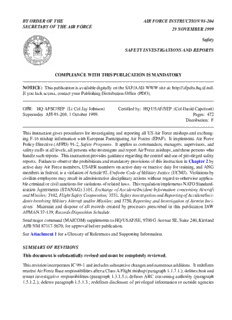
BY ORDER OF THE AIR FORCE INSTRUCTION 91-204 SECRETARY OF

Lengvumas
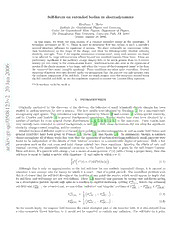
Self-forces on extended bodies in electrodynamics
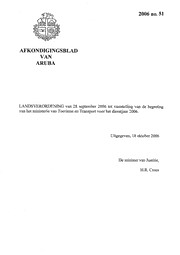
Afkondigingsblad van Aruba 2006 no. 51
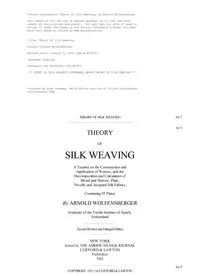
Theory of Silk Weaving
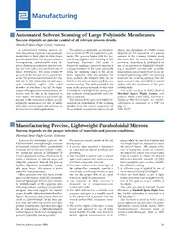
NASA Technical Reports Server (NTRS) 20100014086: Automated Solvent Seaming of Large Polyimide Membranes
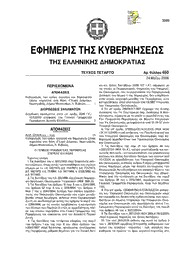
Greek Government Gazette: Part 4, 2006 no. 450

NASA Technical Reports Server (NTRS) 20060028193: Practical Aspects of the Equation-Error Method for Aircraft Parameter Estimation
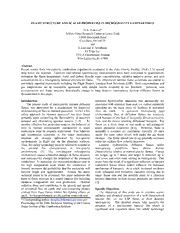
NASA Technical Reports Server (NTRS) 20060051730: Flame Structure and Scalar Properties in Microgravity Laminar Fires
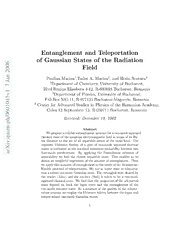
Entanglement and Teleportation of Gaussian States of the Radiation Field

Boating - March 2011
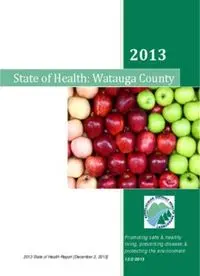
State of Health: Watauga County

C İL T 1, SA YI 1 OC AK 2018

Greek Government Gazette: Part 2, 2006 no. 639

Calcolo mentale scritto
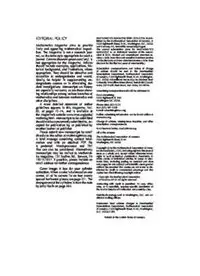
Mathematics Magazine 83 5
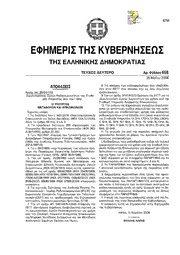
Greek Government Gazette: Part 2, 2006 no. 658
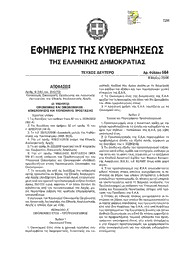
Greek Government Gazette: Part 2, 2006 no. 564

